元永 定正/Motonaga Sadamasa
元永定正は「具体美術協会」の主要メンバーであり、戦後の前衛美術家として国際的にも高い評価を受けています。
1922年、三重県伊賀上野に生まれた元永は、地元の商業学校を卒業後、当初は漫画家を目指して職を転々としていました。1952年に神戸へ転居し、その翌年の芦屋市展に出品したフォーヴ風の裸婦の絵で受賞を果たしますが、やがて彼の関心は抽象画へと移っていきます。そして、1955年に開催された「真夏の太陽にいどむ野外モダンアート実験展」をきっかけに、吉原治良の誘いを受けて「具体美術協会」に加入しました。この頃の元永は、ビニールシートに色水を入れて吊るした【作品(水)】をはじめとする、自然現象から着想を得た実験的な作品を制作していました。
日本画の技法「たらしこみ」からヒントを得た1950年代後半からは、傾斜したカンヴァスに絵の具を流すという方法を採用するようになります。多彩な色が流れ落ち、思いがけない「かたち」を形成したその抽象画は、一大ブームとなっていたアンフォルメルとも重なり注目を集めました。1960年代に入るとエアブラシやアクリル絵の具を用い始め、明瞭な輪郭と独特のフォルムを描きながら、「かたち」の問題をより深く追求し始めます。その後、この手法を使ってユーモラスな絵本を手がけるなど活動の幅を広げ、1980年代からは「具体美術協会」の回顧展にも数多く参加し、戦後を代表する画家としての地位を確立しました。
上記のとおり、元永の作風は年を追うごとに変化を遂げていきましたが、いずれの作品においても、未知なる「かたち」への好奇心や、明るさと遊び心に富んだ精神が根底を流れています。そこに、元永の作品が国内外で愛され続けるゆえんを見出すこともできるでしょう。
Sadamasa Motonaga is an important member of the Gutai Art Association and is internationally recognized as a postwar avant-garde artist.
Born in 1922 in Iga-Ueno, Mie Prefecture, Motonaga graduated from a local commercial school and initially worked from job to job with the goal of becoming a cartoonist. He moved to Kobe in 1952 and won a prize for a Fauve-style nude painting that he exhibited at the Ashiya City Exhibition the following year, but his interests eventually shifted to abstract painting. Then, after the “Open-Air Modern Art Experimental Exhibition in the Midsummer Sun” in 1955, Motonaga was invited by Jiro Yoshihara to join the “Gutai Art Association”. At that time, Motonaga created experimental works inspired by natural phenomena, such as “Work (Water)” a plastic sheet filled with colored water and hung.
In the late 1950s, inspired by the Japanese painting technique of “Tarashikomi”, he began to use the method of pouring paint onto sloping canvases. His abstract paintings, in which a variety of colors flowed down to form unexpected “Shapes” attracted much attention for their overlap with the ongoing “Unformel” boom. In the 1960s, he began to use airbrush and acrylic paint, and began to explore the question of “form” more deeply, painting clear contours and unique shapes. Later he expanded his activities to include humorous picture books using this technique, and from the 1980s he participated in many retrospective exhibitions of the “Gutai Art Association”, establishing himself as one of the leading post-war painters.
As mentioned above, Motoenaga’s artistic style has evolved over the years, but in all of his works, you can see his curiosity about unknown “forms” and a spirit filled with brightness and playfulness at their core. This is one of the reasons why Motoenaga’s works continue to be cherished both in Japan and abroad.
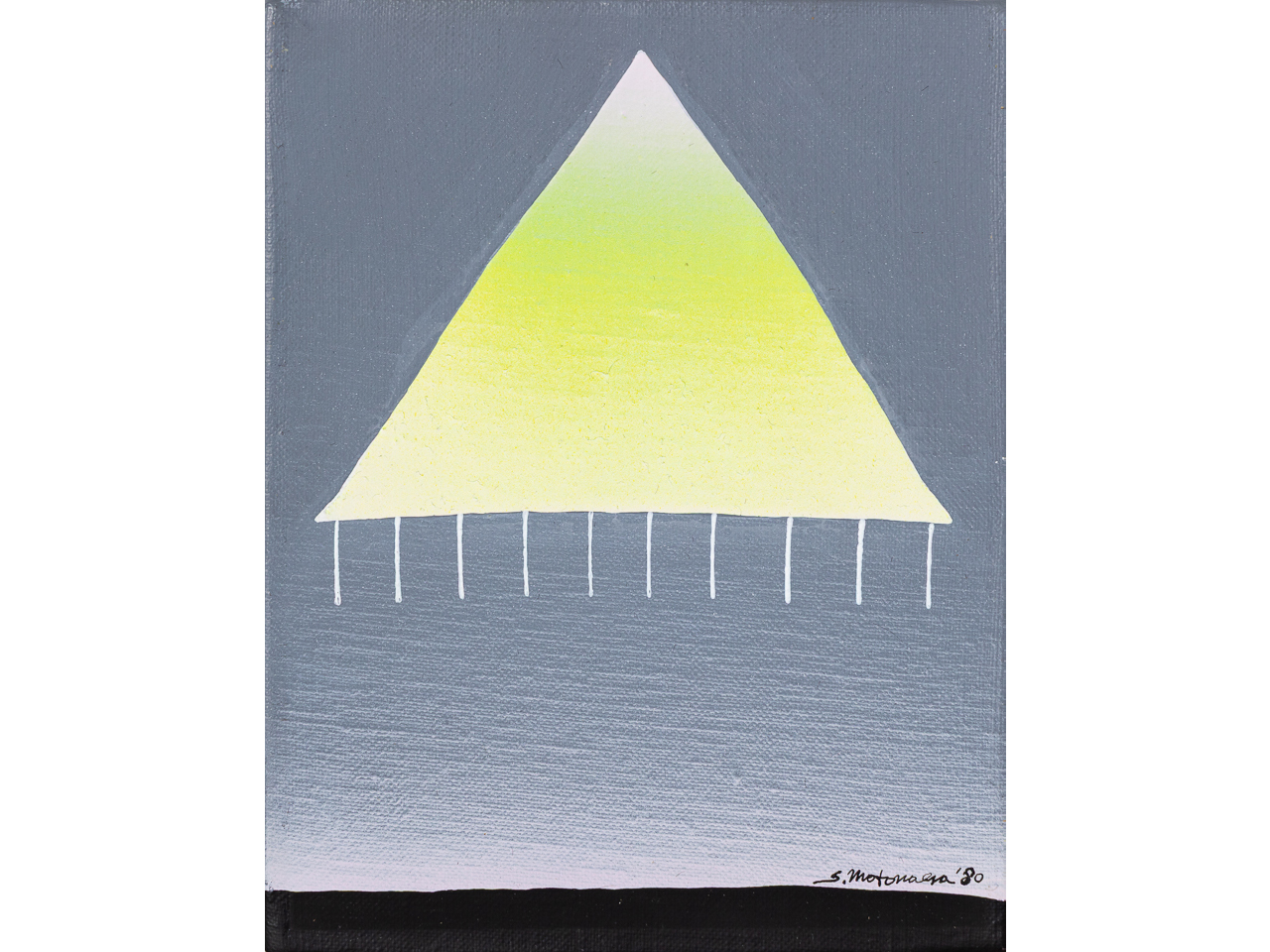
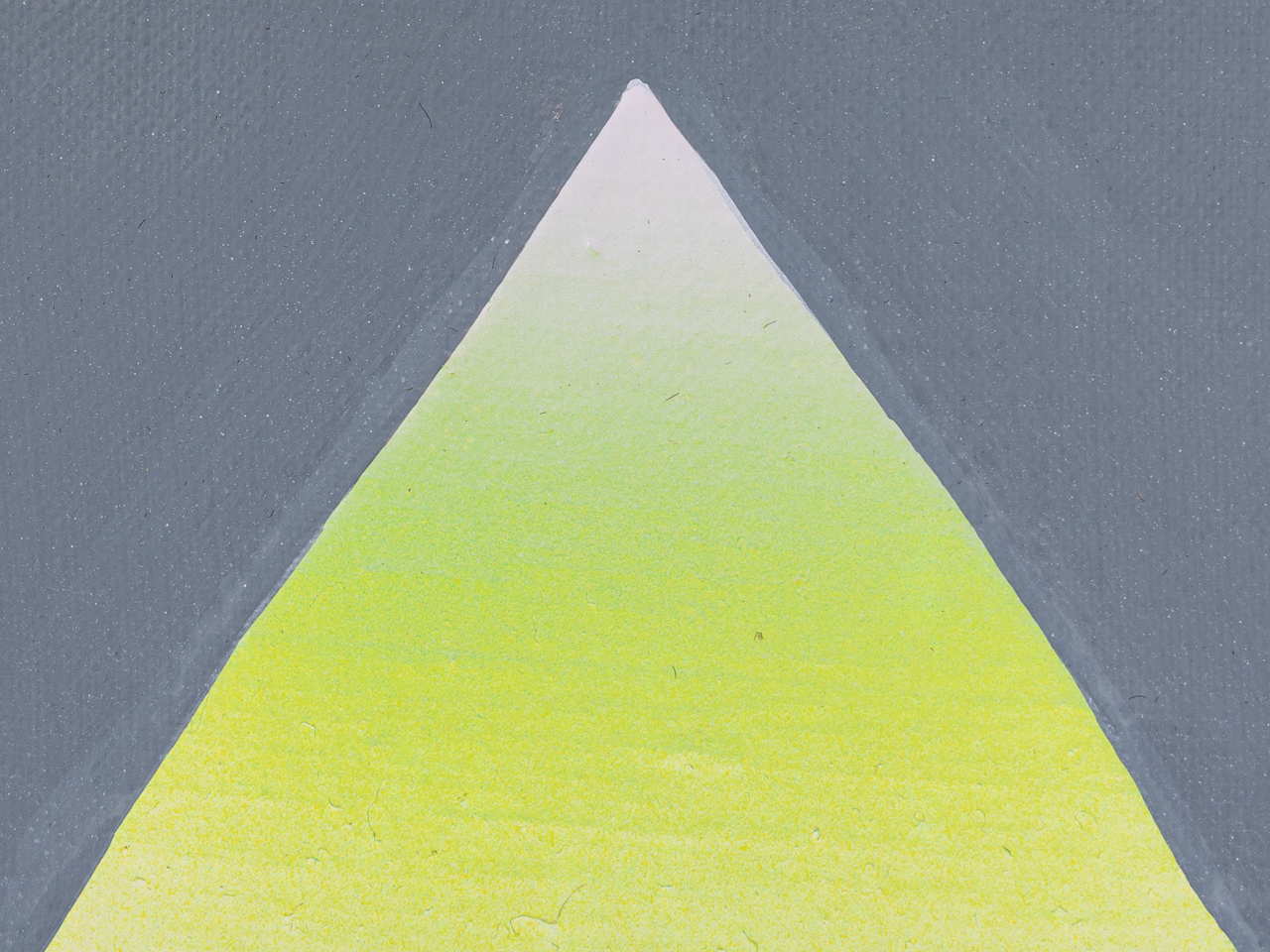
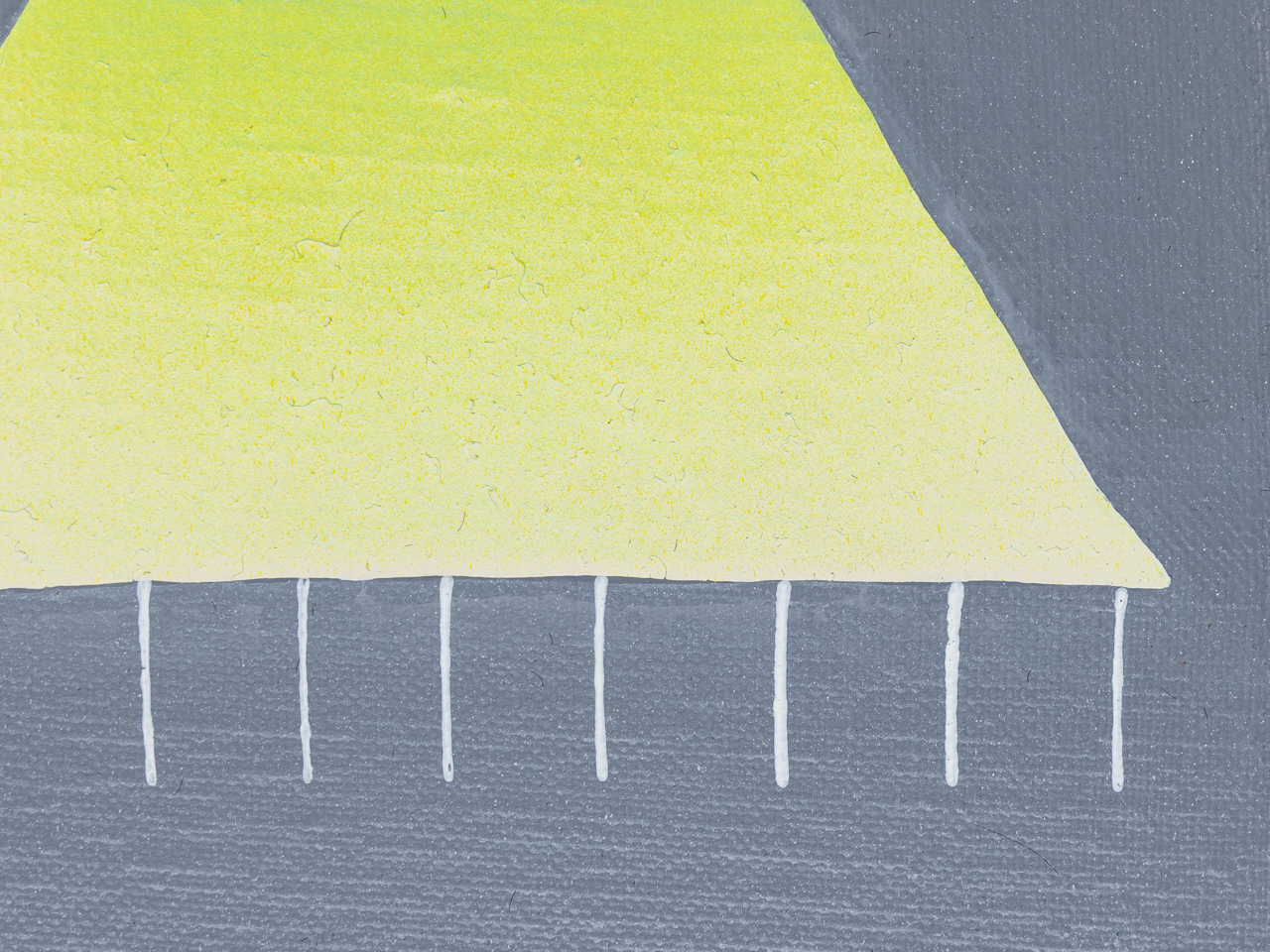
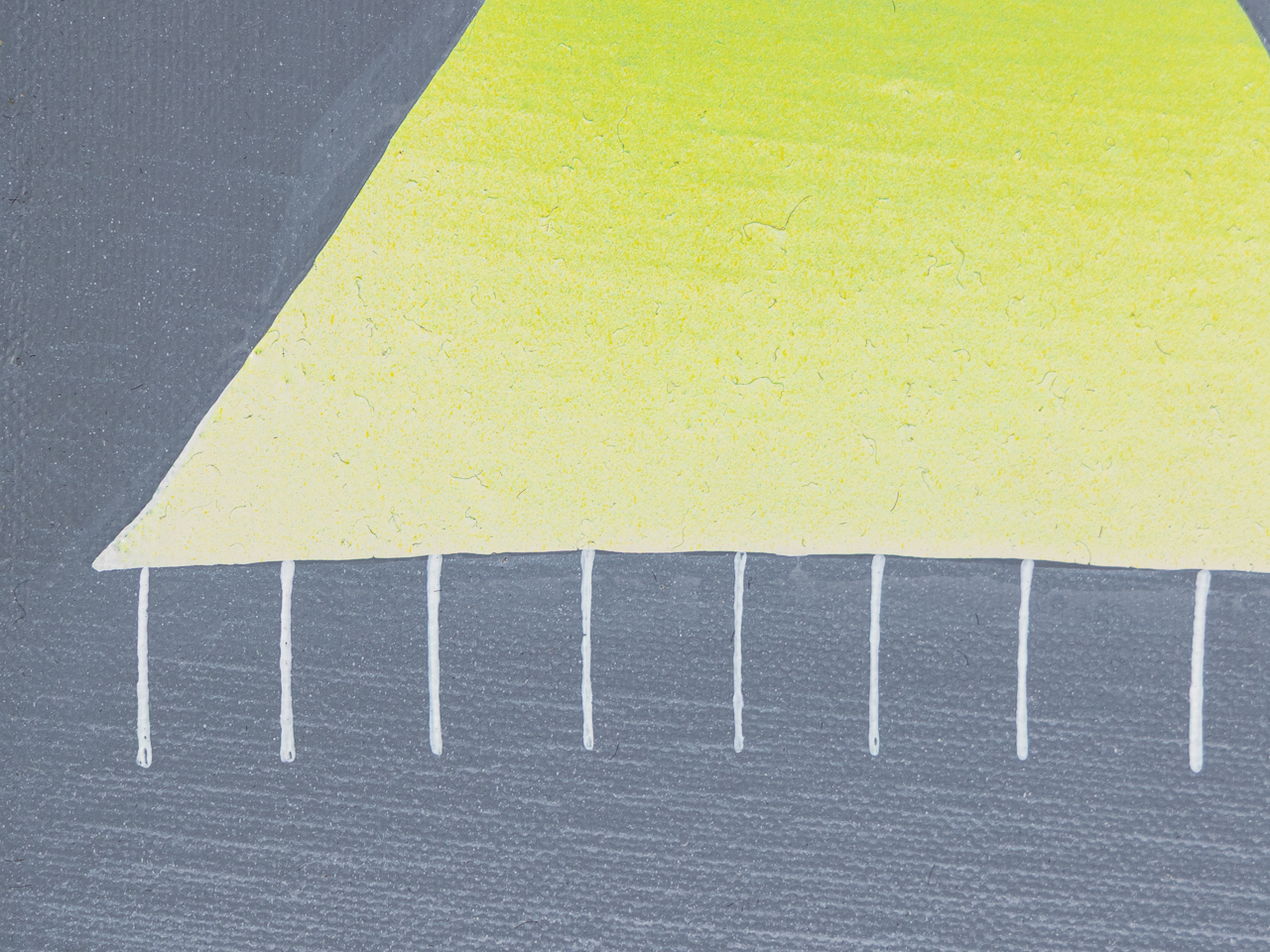
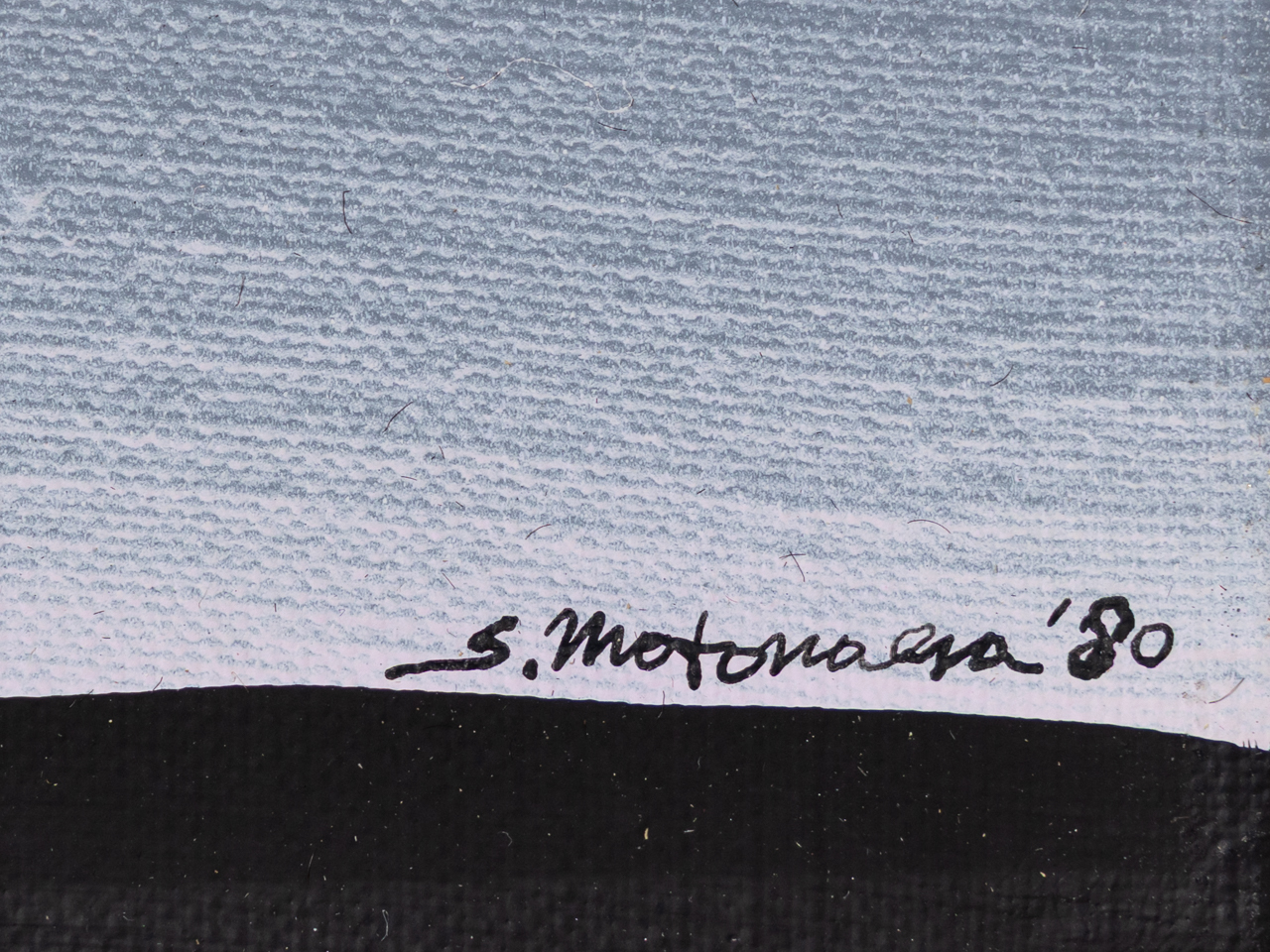
作品名:無題
サイズ:F0号(キャンバスにアクリル)
価格:SOLD OUT
価格は税抜き表示です

